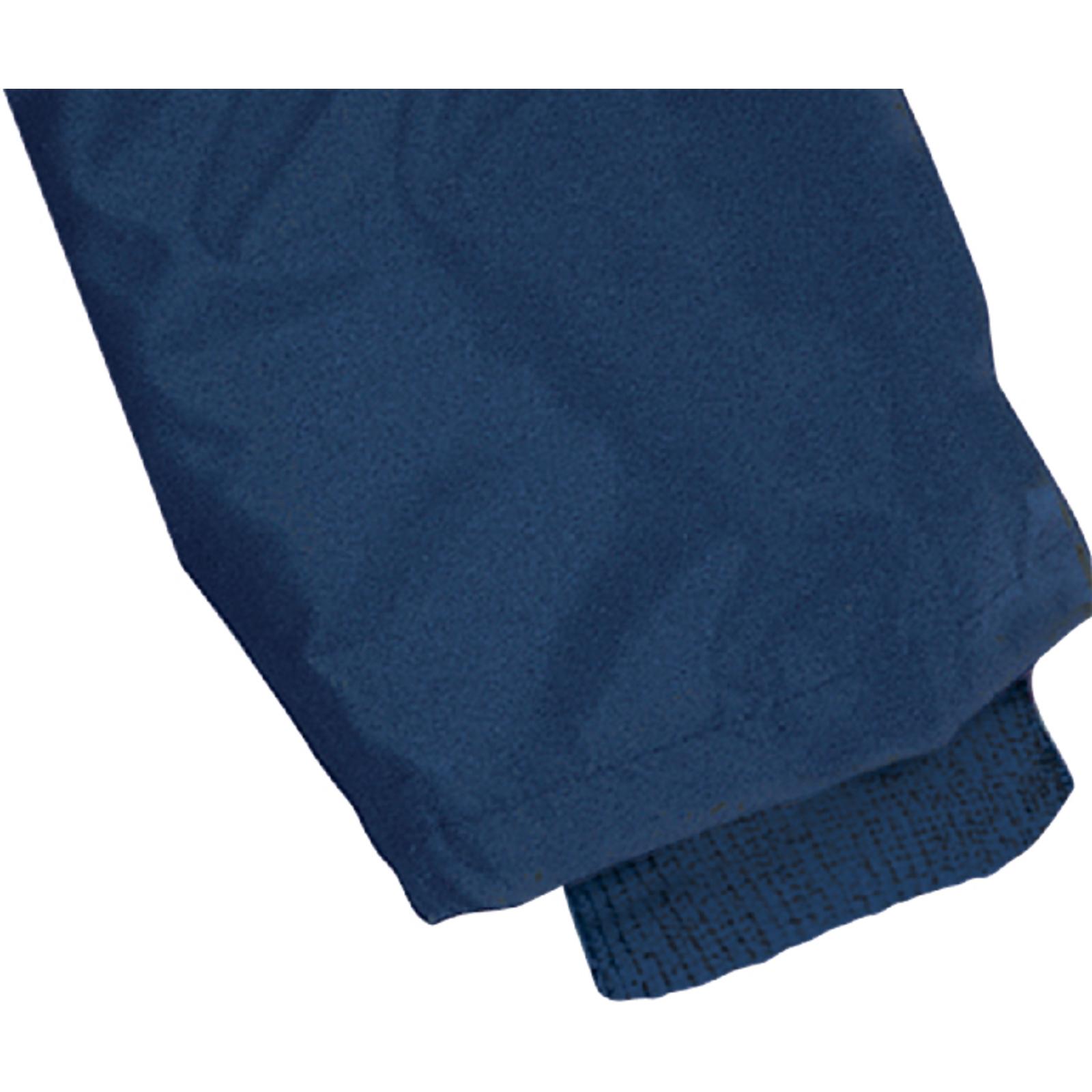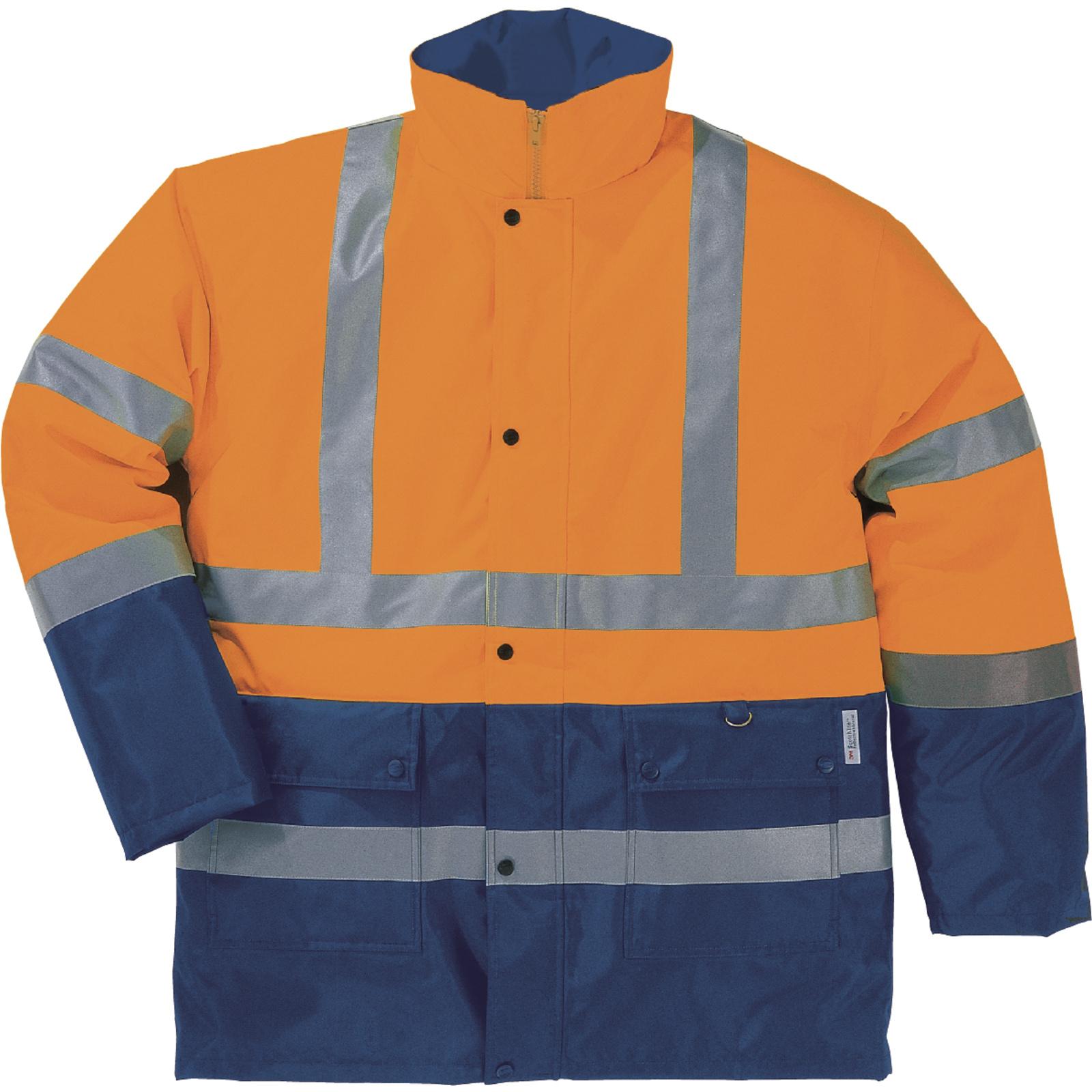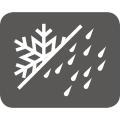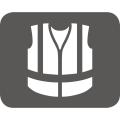The product complies with the European Directive 89/686, notably regarding ergonomics, innocuousness, comfort and with standards :
PU & PVC-COATING POLYESTER SIGNALLING PARKA
Warm parka. Waterproof seams. Fixed hood. Underarm ventilation eyelets. Fastening with zip under press stud flap. Adjustable waist with elastic drawstring. High visibility: Class 3 – Silver colour – Shoulder-belt and parallel assembly. 3 pockets.
Polyurethane-coated Oxford polyester fabric.
Quilted polyester Taffeta lining.
3M Scotchlite™ retro-reflective sewn bands.
15/02/16

Wind proof knitted inside cuffs
| Reference |
pcb |
Colour |
Size |
| STRA2JAPT |
5 |
Fluorescent yellow-Navy blue |
S |
| STRA2JATM |
5 |
Fluorescent yellow-Navy blue |
M |
| STRA2JAGT |
5 |
Fluorescent yellow-Navy blue |
L |
| STRA2JAXG |
5 |
Fluorescent yellow-Navy blue |
XL |
| STRA2JAXX |
5 |
Fluorescent yellow-Navy blue |
XXL |
| STRA2JA3X |
5 |
Fluorescent yellow-Navy blue |
3XL |
| STRA2ORPT |
5 |
Fluorescent orange-Navy blue |
S |
| STRA2ORTM |
5 |
Fluorescent orange-Navy blue |
M |
| STRA2ORGT |
5 |
Fluorescent orange-Navy blue |
L |
| STRA2ORXG |
5 |
Fluorescent orange-Navy blue |
XL |
| STRA2ORXX |
5 |
Fluorescent orange-Navy blue |
XXL |
| STRA2OR3X |
5 |
Fluorescent orange-Navy blue |
3XL |
EN ISO 13688:2013 General requirements Reference standard, not for use alone, but only in association with another standard containing the protection performance requirements.
This standard specifies general performance requirements for ergonomics, innocuousness, size designation, durability, ageing, compatibility and marking of protective clothing and the information to be supplied by the manufacturer with the protective clothing.
EN ISO 20471:2013 High-visibility warning clothing for professional use - Test methods and requirements - 3 Class of clothing (1 to 3)
- Garment class (1 to 3) - Parka/Bodywarmer
- Garment class (1 to 3) - Parka/Jacket /Bodywarmer
- Garment class (1 to 3) Bomber jacket /Bodywarmer
- Garment class (1 to 3) Jacket /Trousers
- Maximum number of washing
This standard specifies the requirements for protective clothing aiming to signal the presence of the wearer visually, so that he may be detected and seen in hazardous situations, in all conditions of daylight, and night under illumination of car headlights. There are three classes of high-visibility clothing. Each class must have minimum surfaces of visible material constituting the garment; the higher the class, the more visible the garment:
– CLASS 1:
Background material (Fluorescent): 0.14 m²
Retroreflective material (Bands): 0.10 m²
– CLASS 2:
Background material (Fluorescent): 0.50 m²
Retroreflective material (Bands): 0.20 m²
– CLASS 3:
Background material (Fluorescent): 0.80 m²
Retroreflective material (Bands): 0.20 m²
Background material: Yellow, orange/red or red fluorescent material intended to be highly conspicuous.
Retroreflective material: Classified into 2 levels. The highest level of retroreflection gives the best contrast and visibility of high-visibility clothing seen in darkness, under headlamps.
Marking:
X : Class of high visibility surface (from 1 to 3)
X : Performance level of the retro-reflective material (1 to 2)
EN14058:2004 Protective garment against cool environments - 3 Thermal resistance of garment Class (1 to 3)
- Thermal resistance of garment Class (1 to 3) - Parka
- 3 Air permeability Class (1 to 3)
- 2 Class of resistance to water penetration (from 1 to 2)
- 0,280m².K/W Resultant effective thermal insulation measured on a mobile model
- X Resultant effective thermal insulation measured on a stationary model
This standard specifies the requirements and performance test methods for protective garments (vests, jackets, coats, trousers) against cool environments.
These garments are for use in moderate low temperatures (-5°C and over) to protect against local body cooling and are not only for outdoor use such as in the construction industry, but may also be used for indoor activities, such as in the food processing industry.
These garments are not always necessarily made of air impermeable or watertight materials. Therefore, in this European standard, these requirements are optional.
EN343:2003 A1:2007 Protective garment against rain exposures - 3 Resistance of the Penetration of water (1 to 3)
- Resistance of the Penetration of water (1 to 3) - Parka
- 1* Evaporative resistance (1 to 3)
This standard specifies the requirements and test methods applicable to the materials and seams of protective clothing against foul weather (for example precipitation in the form of rain or snow), fog and ground humidity.
• THERMAL RESISTANCE (Rct) IN M².K/W :
Measurement of the thermal insulation provided.
Divided into 3 classes (from 1 to 3) from the least insulating to the most insulating. The higher the value, the greater the thermal insulation.
• WATER VAPOUR RESISTANCE (Ret) IN (M².PA)/W :
Measures the evaporative resistance, i.e. the product’s obstacle to the passage of water vapour, or the barrier it offers to evaporation of transpiration on the surface of the skin. The higher a product’s water vapour resistance, the greater this product’s barrier to the passage of water vapour: A breathing product has a low water vapour resistance. Divided into 3 classes (from 1 to 3) from the least breathable to the most breathable.
• AIR PERMEABILITY (AP) IN mm/s :
Determines the complex’s permeability to air.
Divided into 3 classes (from 1 to 3) from the least airtight to the most airtight.
• RESISTANCE TO WATER PENETRATION (WP) IN PASCAL:
Measurement of the outer material and seams’ resistance to water penetration under a water pressure of (980+/-50) Pa/min.
Divided into 3 levels (1 to 3) from the least impermeable to the most impermeable.
• RESULTANT EFFECTIVE THERMAL INSULATION:
Measured on moving dummy (/cler) or on non moving dummy (/cle).
The thermal insulation coefficient, expressed in m2.K/W, is used to determine the optimum usage temperature of the garment in relation to the individual’s activity and his exposure time.
Thermal insulation is measured with undergarments of type :
– (B) for ensembles (Undershirt with long sleeves, long underpants, socks, bootee + thermojacket, thermopants, knitted gloves, balaclava).
– (R) for garments (Undershirt with long sleeves, long underpants, socks, bootees, jacket, trousers, shirt, knitted gloves, balaclava).
– (C) provided by the manufacturer.





